4 Types of Tarantulas That Are Suitable To Be Kept As Pets

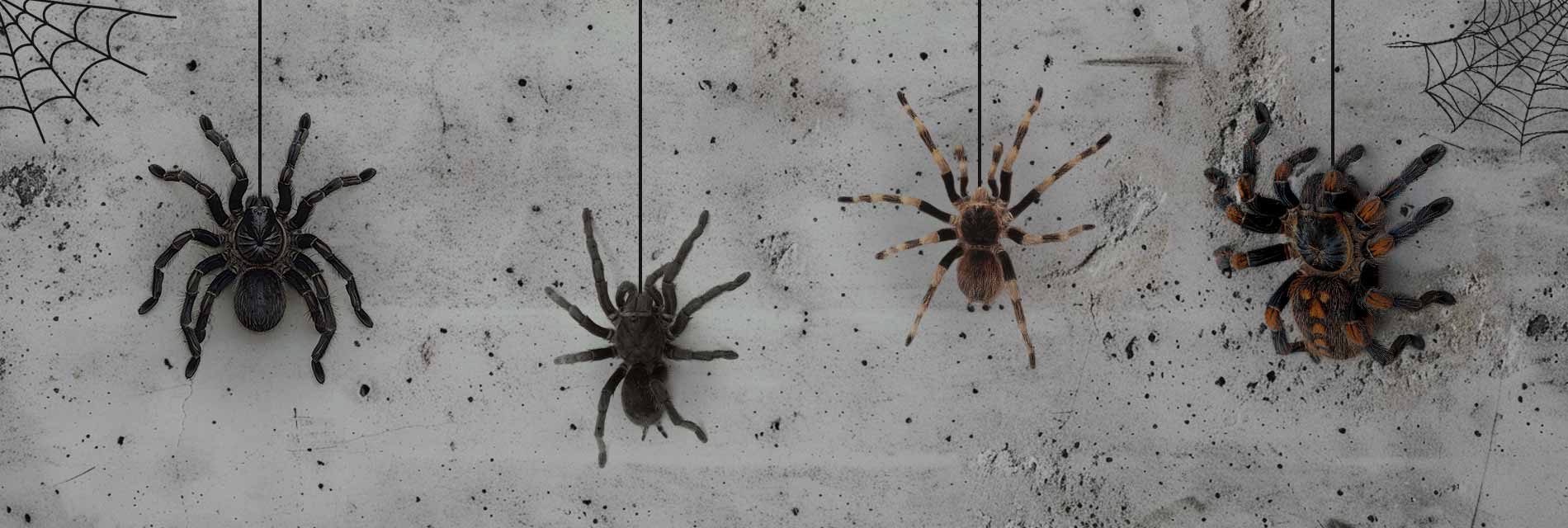
With over 1,000 identified species, the tarantula family boasts an incredible variety. From the vibrant orange hues of the Mexican red-knee tarantula to the cobalt blue sheen of the cobalt blue tarantula, these spiders come in a kaleidoscope of colors and patterns.
Tarantulas – the eight-legged denizens of the arachnid world evoke a mixture of fascination and fear. But for a growing community of dedicated enthusiasts, tarantulas are more than just creepy crawlies – they’re exotic animals that can be kept as pets. With their diverse range of colors, textures, and behaviors, these intriguing creatures offer a unique and rewarding pet ownership experience.
While their fangs and venomous nature might raise eyebrows, tarantulas kept as pets pose minimal threat to humans. Their venom, often milder than a bee sting, is primarily used for subduing prey, not harming humans. Their docile temperament, surprisingly low-maintenance needs, and surprisingly long lifespans (some species can live for decades!) contribute to their growing popularity.
This article is your gateway into the captivating world of tarantulas. We will delve into different types of Tarantula species that can be kept as pets and how to properly take care of them.
Types of Tarantulas Suitable To Be Kept As Pets
In this section, we have discussed in detail the types of Tarantulas that are suitable as pets for beginners interested in keeping spiders as pets. So read on:
The Mexican Red-Knee
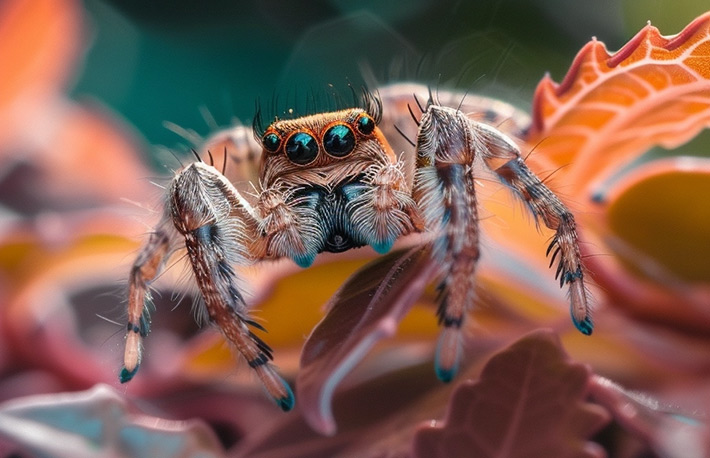
The Mexican Red-Knee is a common name for two species of tarantulas: Brachypelma hamorii and Brachypelma smithi. They are native to the Pacific coast of Mexico, where they live in warm and dry habitats. These types of tarantulas are popular pets among arachnid enthusiasts because of their striking appearance, docile temperament, and long lifespan.
These tarantulas have a leg span of around 5 inches and weigh about 0.5 ounce. Females are slightly larger than males and can live up to 30 to 40 years, while males only live up to 5 to 10 years. These tarantulas have black bodies with reddish-orange markings on their knees, hence their name. They also have a creamy beige carapace with a black square on it.
The Mexican Red-Knee are mostly nocturnal and spend most of their time in their burrows or under rocks. They are not very active and rarely bite, but they can throw urticating hairs from their abdomen and legs if threatened. These hairs can cause irritation and allergic reactions in humans and other animals.
They are carnivorous and feed on insects, small rodents, and other invertebrates. The Mexican Red Knee use its fangs to inject venom into its prey and then liquefy its internal organs with digestive enzymes. They can go for long periods without food or water, which makes them low-maintenance pets.
How To Take Care Of A Mexican Red Knee
If you want to keep a Mexican Red Knee as a pet, you will need a glass or plastic enclosure with a secure lid and ventilation. The enclosure should be wider than it is tall and have at least 6 inches of substrate, such as peat moss, coconut fiber, or vermiculite.
You will also need a hide, a water dish, and some decorations, such as plants, rocks, or wood. The ideal temperature for the Mexican Red Knee is between 76°F and 80°F, and the humidity should be around 65% to 75%.
You can feed your tarantula crickets, mealworms, roaches, or mice once or twice a week, depending on their size and appetite. Also, make sure to mist the enclosure occasionally to maintain the humidity and provide a source of drinking water.
The Mexican Red Knee is one of the most iconic and beautiful tarantulas in the world. It is also one of the most docile and friendly, making it a great choice for beginners and experts alike.
Brazilian Black
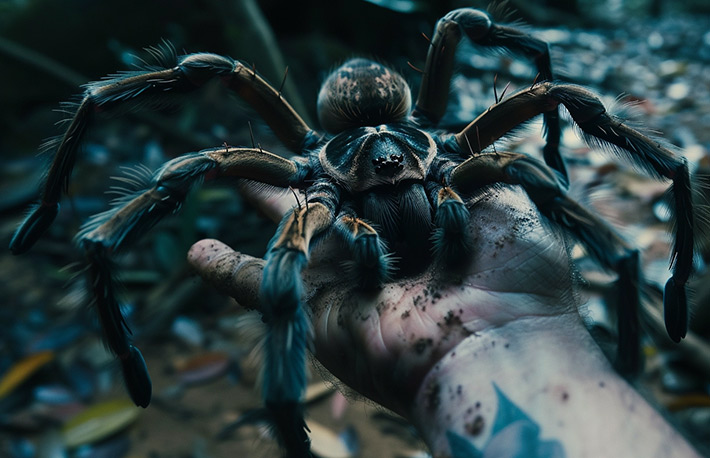
The Brazilian Black is another name for Grammostola Pulchra, a species of tarantula native to Brazil. It is known for its solid black velvety body, which makes it an appealing tarantula for the pet industry.
These types of Tarantula have a leg span of up to 8 inches and weigh about 0.5 ounces. Females are slightly larger than males and can live up to 20 years or more, while males only live up to 5 years.
Brazilian Blacks are known for their calm and docile nature. They are more likely to flee a threat than bite. However, like most New World tarantulas, they do possess urticating hairs, which they can kick off if they feel threatened. The hairs can irritate the skin and eyes, so it’s always best to handle them with care, if at all.
In the wild, these types of tarantulas create burrows underground, often under low vegetation or around rocks. They are nocturnal creatures, coming out at night to hunt for prey. Brazilian Blacks are carnivores and mostly feed on insects like crickets, mealworms, and roaches.
How To Take Care Of A Brazilian Black…
If you want to keep a Brazilian Black as a pet, then you will need a 10-gallon fish tank. Provide a substrate of at least 5-6 inches deep, such as coco fiber or reptile bark. This lets them burrow and hide just like in the wild and feel secure. You can also provide other objects, such as cork bark or a small cave that will enable them to hide during the daytime.
Desert Blonde
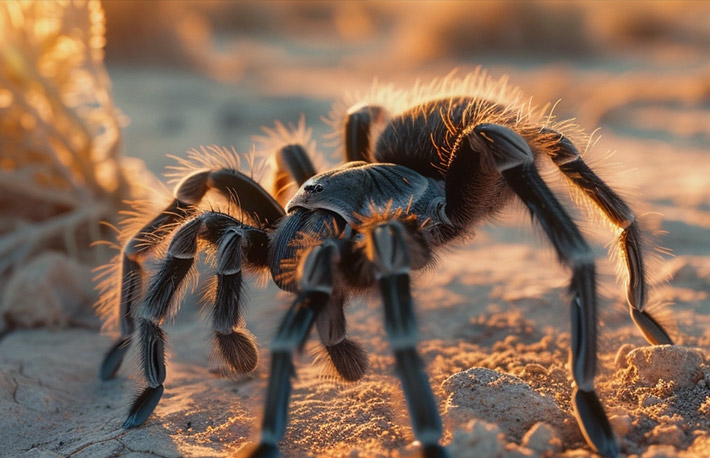
The Desert Blonde tarantula, also known as the Western Desert Tarantula, Arizona Blonde Tarantula, or Mexican Blonde tarantula, is a species of spider that is part of the family Theraphosidae. It has a leg span of about 5-6 inches (8-13cm) and a body length of up to 2.2 inches (56 mm) for females and 1.7 inches (44 mm) for males.
This species of Tarantula prefers dry and arid climates and can generally be found in the deserts of Arizona, New Mexico, California, and northern Mexico. It digs long, deep burrows in the desert sands and covers them with silk threads. Sometimes, instead of digging the burrows themselves, these tarantulas also inhabit abandoned rodent burrows.
True to its name, the Desert Blonde’s carapace (upper part of the body) is covered with densely packed blonde or lighter-colored hair. The blonde upper body contrasts sharply with its dark brown to black legs and abdomen. The males have a reddish abdomen, while the females are more uniform in color.
It is a nocturnal hunter that feeds on insects, small rodents, lizards, and other spiders. It uses its venomous fangs to subdue its prey, but its venom is not very harmful to humans, causing only mild pain and swelling.
How To Take Care Of A Desert Blonde
Temperament-wise, it is a docile and easygoing spider. Hence, they are one of the top choices for individuals looking for pet tarantulas. It requires a 5 to 10-gallon tank with a secure lid, a substrate of sand or soil, a hiding place, a water dish, and a low humidity level. Typically, females can live up to 30 years, and males live up to 5 to 10 years.
The Desert Blonde is a solitary spider. Therefore, these types of tarantulas should not be housed with other spiders or animals. It can defend itself by biting or flicking barbed hairs from its abdomen, which can cause skin irritation and eye damage. It should be handled gently and carefully, if at all, and never dropped or squeezed.
The Chilean Rose
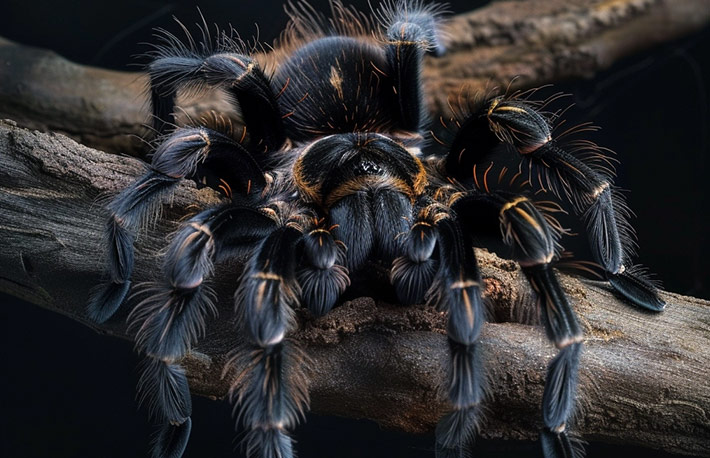
The Chilean Rose Tarantula is also known as the Rose Hair Tarantula, the Chilean Fire Tarantula, or the Chilean Red-haired Tarantula. It is a medium-sized Tarantula native to South America. These types of tarantulas can be found typically in the dry grasslands, scrublands, and deserts of Chile, Argentina, and Bolivia. It prefers low altitudes, ranging between 0 and 4,921 feet (0 and 1,500 meters) above sea level.
This species of Tarantula got its name from the rose-colored hairs that cover its back (cephalothorax). These range from a light pink to a reddish hue, contrasting nicely with their dark brown to black bodies. It has a leg span of about 4.5 to 5.5 inches (11 to 14 cm) and a body length of up to 3 inches (8 cm) for females and 1.5 inches (4 cm) for males. Chilean Rose Tarantulas are slow growers but can live for a long time, especially the females. Females can live up to 20 years in captivity, whereas males typically live for 3-5 years.
The Chilean Rose is a nocturnal hunter that waits until nighttime to emerge and hunt insects, small rodents, lizards, and other spiders. It uses its venomous fangs to subdue its prey. However, its venom is not very harmful to humans, causing only mild pain and swelling.
How To Take Care Of A Chilean Rose
These types of tarantulas are generally very calm and docile in nature, which is one of the reasons why it is a popular choice among beginner tarantula owners. It is also very easy to care for. An adult Chilean Rose requires a 10-gallon terrarium. Before buying, check that the enclosure has a secure lid and provide 5-6 inches of substrate like coco fiber or reptile bark to allow for burrowing. You should also make sure the enclosure’s temperature is on the warm side of 5-80 degrees Fahrenheit (24-27 degrees Celsius) with a cooler side at 70 degrees Fahrenheit (21 degrees Celsius).
How To Properly Take Care of A Pet Tarantula
The first step to taking proper care of a pet tarantula is to choose a suitable species of tarantula. There are hundreds of different kinds of tarantulas, and some are more suitable for beginners than others. Some factors to consider while choosing a tarantula are the size, temperament, venom potency, and care requirements of the tarantula.
Some of the most popular and easy-to-care-for species are the Chilean rose, the Curly Hair, and the Mexican Red-Knee.
Preparing An Enclosure For Your Tarantula
The next step is preparing a proper enclosure for your tarantula. Depending on whether your tarantula is a ground-dwelling or a tree-dwelling species, you will need a different type of container. Ground-dwellers need a shallow, wide container with plenty of substrate (such as coir, peat moss, or vermiculite) to burrow in.
On the other hand, tree-dwellers need a tall, narrow container with branches, cork bark, or plants to climb on. Both types of tarantulas need a secure lid with ventilation holes, a water dish, and a hiding place (such as a half-log, a flowerpot, or a coconut shell).
An easy rule to follow when trying to decide the capacity of a tank for a Tarantula is – the enclosure dimensions should be approximately two to three times the spider’s leg span in width, three times in length, and about a foot in height.
What To Feed A Pet Tarantula
Make sure to feed your tarantula with live prey. Tarantulas are carnivorous and need live insects, such as crickets, roaches, or mealworms, to eat. You can buy these from a pet store or catch them yourself. Regardless of the source, make sure the food does not have pesticides or parasites. Feed your tarantula once or twice a week, depending on the size and age of the spider. Remove any uneaten prey after 24 hours to prevent mold and bacteria growth.
Handling a Pet Tarantula
You also need to know how to handle your tarantula with caution and respect. Tarantulas are not cuddly pets, and they do not enjoy being handled. In fact, handling can stress them out and cause them to bite or flick their urticating hairs, which can cause skin irritation or allergic reactions.
Therefore, only handle your tarantula when necessary, such as when cleaning the enclosure or transferring the spider to another container. Use a gentle and slow approach and avoid touching the abdomen or the fangs. Always wash your hands before and after handling your tarantula.
Keep An Eye on Your Tarantula’s Health…
Constantly monitor your tarantula’s health and behavior. Tarantulas are generally hardy and low-maintenance pets, but they can still get sick or injured. Some signs of illness or injury are lethargy, loss of appetite, abnormal posture, bleeding, missing limbs, or parasites. If you notice any of these signs, consult a veterinarian who specializes in exotic pets.
Also, be aware of your tarantula’s molting cycle, which is when they shed their old exoskeleton and grow a new one. Molting is a stressful and vulnerable time for tarantulas, so do not disturb them or feed them during this process. Wait until the new exoskeleton hardens before resuming normal care.
Finally, owning a tarantula may be illegal in some areas. Always check local laws before getting one.








All Comments
Dorthy Dibbert
21 March, 2024
Your articles are both informative and enjoyable.
Reply